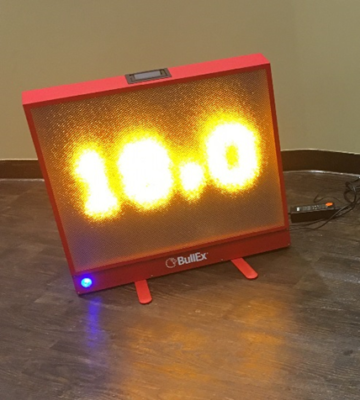Fire! Fire! Quick, the extinguisher!

Suddenly, a commotion down the hall – you hear screams, then shouts: “Fire! Fire!”
First reactions might be: “Get out now!” or maybe “Take the stairs!” But someone (you!) should respond with:
- “Where’s the fire extinguisher?” and then,
- “Will it work?”
If you can answer “Yes!” to “Will it work?” you may be able to keep a fire from becoming a disaster.
Here at Emergency Plan Guide, fires and fire prevention are a frequent theme.
For example:
- In California, wildfires threaten all year long. We’ve addressed them often, including introducing a new way to provide local water on demand for firefighting helicopters.
- Just last month we touched on the urban apartment house fires where smoke alarms didn’t work. This led to more info about alarms, their batteries, etc.
- Last year we shared pictures of senior citizens testing their skills using the laser training extinguisher system from Lion. (That training was excellent, and fun. We asked our seniors came to that meeting carrying their home extinguishers. Then we found, and compared dates of manufacturer. The “winner” had an extinguisher dated . . . 1994!)
But let’s go back to the people hearing “Fire! Fire!” – the situation we described in the very first sentence.
Since you’re reading this, we can assume that if you heard this you would know where to find the nearest fire extinguisher. We would LIKE to be able to assume you know how to use an extinguisher. (Check out the laser training Advisory, mentioned above.) The question we can’t answer, and we suspect you may not be able to answer either, is . . . “Are you sure this extinguisher will work?”
I can’t find any “official” statistics about failure. (Odd, actually. I wonder why not? I’ve got a clue – coming up later.) But I heard a sobering interview with a retired police officer. Here’s pretty much what he said. “I’ve arrived at around a dozen car fires, grabbing the extinguisher in the squad car. But then, because my extinguisher gave out after a couple of seconds, I stood there helplessly watching as a fire that should have been easily extinguished burned that car completely up.”
Seems to me there must be a better way to know if the extinguisher will work. And this month I believe I’ve found one.
There’s a lot to this investigation. Here are the questions I asked, and some answers I’ve been able to come up with.
Why can’t we count on fire extinguishers? Main reasons seem to be:
- The pressure gauge may say “OK” but extinguisher may be “dead.”
- The chemical powder inside the extinguisher has moisture or compacted and won’t discharge even if there is pressure.
- The canister is rusted, or the rubber hose has decayed; they come apart in your hands. Extinguishers with plastic components seem to be particularly vulnerable.
- The user may never have practiced switching hands to pull the pin, aim the hose and squeeze, etc.
But I thought extinguishers were inspected?
Sure, OSHA has clear inspection and maintenance requirements for the workplace. (But do people do them at home?) Here’s what I learned about caring for an extinguisher.
- Every month should start with a “visual test.” Is the extinguisher where it’s supposed to be? Visible and easy to grab? Pressure gauge in the green? Any obvious damage? Is pin in place?
- What to watch for? (1) Homeowners store their extinguishers under the kitchen sink. WAAAAY under. They fail this first test. (2) Apartment house owners discover that the cabinets, where extinguishers are supposed to be, are empty.
- Once a year, extinguishers in commercial use are supposed to be serviced by state licensed technicians. This means examining and repairing any potential problems with handles, hose, nozzle, etc.
- What to watch for? My research found that sometimes technicians add repairs and items that may not have been necessary. But since business owners seldom really check their bills, they just end up paying them!
- Every 5-6 years (sometimes every 12 years, depending on type of extinguisher) professional service companies test the container itself. They discharge the extinguisher, take it apart, then reload and re-pressurize it. This takes time and requires special knowledge, tools and supplies (new extinguishing agent).
- Coming up: More on how this may not be as effective as you’d think!
So how long does a fire extinguisher typically last?
The “answer” here seems to depend on a number of things: the quality, type and size of extinguisher, its environment (stored inside? outside?), etc. The NFPA makes this general statement: “ . . .,rechargeable fire extinguishers must be recharged every 6 years, whereas disposable extinguishers must be replaced every 12 years.“
So the first thing to know is whether you have a disposable or a rechargeable extinguisher. (Most homeowners have disposable models because they are easier to find and less expensive to buy. More about price, below.) A disposable extinguisher has plastic components; the rechargeable extinguisher has a metal cap and valve.
Check the age of your disposable extinguisher!
Find the manufactured date (on the label or on the bottom – always tiny print!). If it’s 15 years old, dispose of it and get a new one! (Remember our senior citizen clutching the extinguisher manufactured in 1994??)
What about a rechargeable extinguisher?
When your rechargeable extinguishers are properly maintained, they’ll last a lot longer. Still, you’ll be paying for the maintenance services. And when the rechargeables reach the age of 12 years, they’ll have to “pass” even more stringent and costly tests if you want to keep using them safely.
Warning. In my research, I discovered references to “fire extinguisher service companies” that were not only adding fraudulently to their bills, but weren’t even the licensed services that companies thought they had a contract with! Be sure to check!
Second Warning. Even when your extinguishers are being recharged, you may not be getting what you are paying for. The problem? Some service providers may not be refilling your extinguishers with the proper chemical agents. A 2020 test of 100 extinguishers (from different manufacturers, different service companies, etc.) by Dyne Fire Protection Labs found that 9 out of 10 had been re-filled with something other than what the extinguisher manufacture called for! Obviously, the wrong “mix” may mean the extinguisher may not operate as designed. After a fire you’d sure hate to have the official report claim “User error” when it was all the fault of the extinguisher! (See video report of the Dyne study here: https://youtu.be/4YDFtGubNpY )
So what’s the Better Option I discovered? An extinguisher called the Rusoh® Eliminator®.
Even though it’s UL listed, and has been on the market since 2017, I have never seen this extinguisher! It really is different, starting with looks. Here are the innovations and why I had to write this Advisory.

- You “charge” this extinguisher only when you need it! Pull down the simple yellow lever to puncture a CO2 cartridge (about the size of a short flashlight). The extinguisher is instantly pressurized. (The cartridges come in packs so you can always have a fresh one on hand.) So, the Eliminator eliminates the “pressure leak” concern.
- There’s no danger of the chemicals inside the container getting compacted, thanks to the Eliminator’s “Fluffing tool.” (This is what captured my imagination!) Imagine an augur running up the center of the extinguisher. Every month, just give the “Fluffer” on the bottom of the extinguisher several turns. The chemicals inside will be stirred and mixed up, eliminating “compaction.”
- The container can’t rust or dent or degrade because it’s made of super hard polymer. Eliminates damage and/or deterioration. Recyclable, too.
- To use, lift off the wall holder, puncture the CO2, aim and squeeze. Big handle that’s easy to grab, solid body, works with left or right hand. Eliminates confusion and fumbling.
Most compelling feature for business? The Eliminator can eliminate service contracts!
Because it’s so simple, you can do the monthly and annual maintenance yourself after getting certified via an online course. Doing your own maintenance saves money being paid to outside vendors, and avoids the security and perhaps health risks of having strangers wandering through your facility.
So what does the Eliminator cost, compared to traditional extinguishers?
As you might expect, the initial purchase price is more. I looked at the cost of the 5 lb. extinguisher, most popular for commercial use. It costs around $150 (on the website), compared to a typical rechargeable extinguisher around $40-$60.
But that’s the purchase price, not the full cost. For business, costs includes those yearly inspections, maintenance, recharge, etc. How much are you paying for those services now? If you’re always on the lookout for cost savings, check out the Savings Calculator at the Fire Technology Innovations site.
If you’re serious about better fire extinguisher protection, I encourage you to take a closer look at the Rusoh Eliminator. You may want to do like I did, just pick up the phone and talk directly to the VP, John Tabacek. Here’s his contact info: John Tabacek, Fire Technology Innovations, (949) 246-4826 (PST), j.tabacek@teamfti.com, www.teamfti.com
Virginia
Your Emergency Plan Guide team
P.S. These questions were all mine, as a “regular” consumer with a serious interest. I am sure that a trained professional may have more of them. Either way, as a user or a professional, your comments and questions will help us all learn more. Please share them!


























 Just waiting for you to make a mistake!
Just waiting for you to make a mistake!


 Stop reading right now.
Stop reading right now.
 Keeping CERT Training Interesting With a “Movie Night”
Keeping CERT Training Interesting With a “Movie Night”
 The US Department of Labor has a division called Occupational Safety and Health Administration, otherwise known as OSHA. I’m sure you’ve heard of it!
The US Department of Labor has a division called Occupational Safety and Health Administration, otherwise known as OSHA. I’m sure you’ve heard of it!
